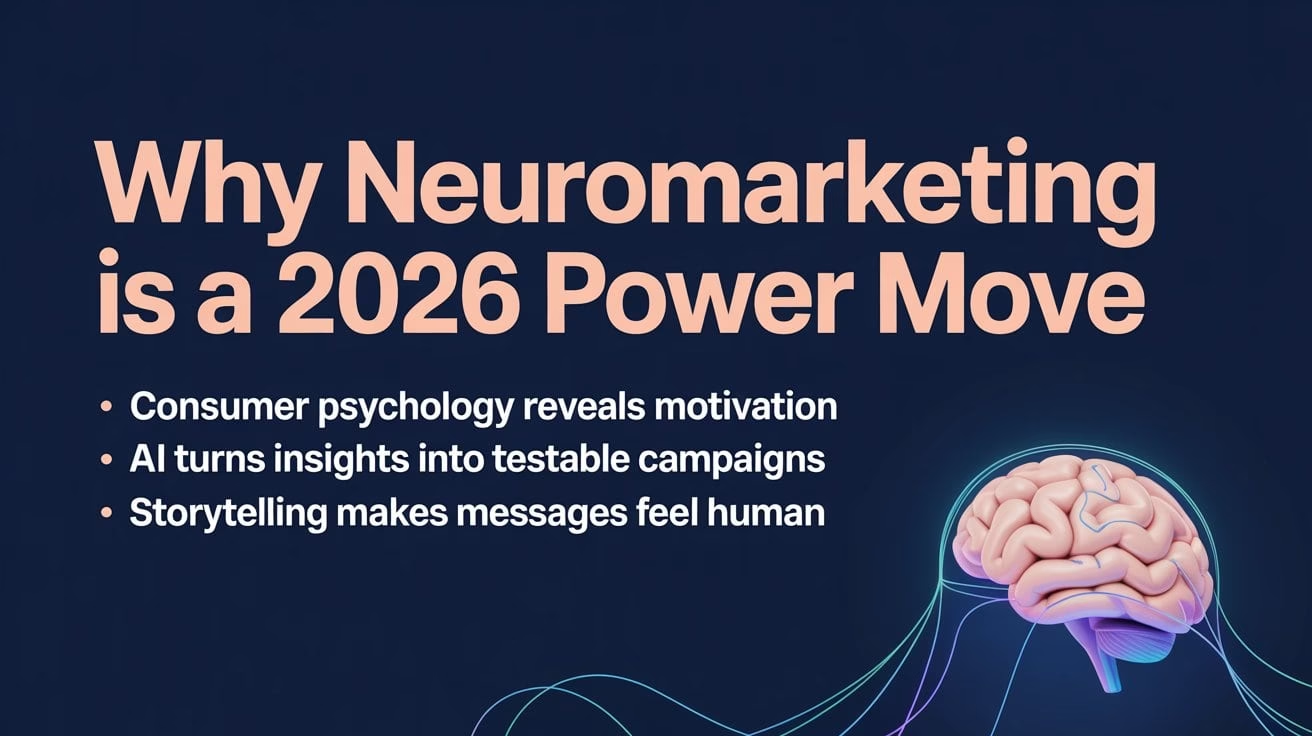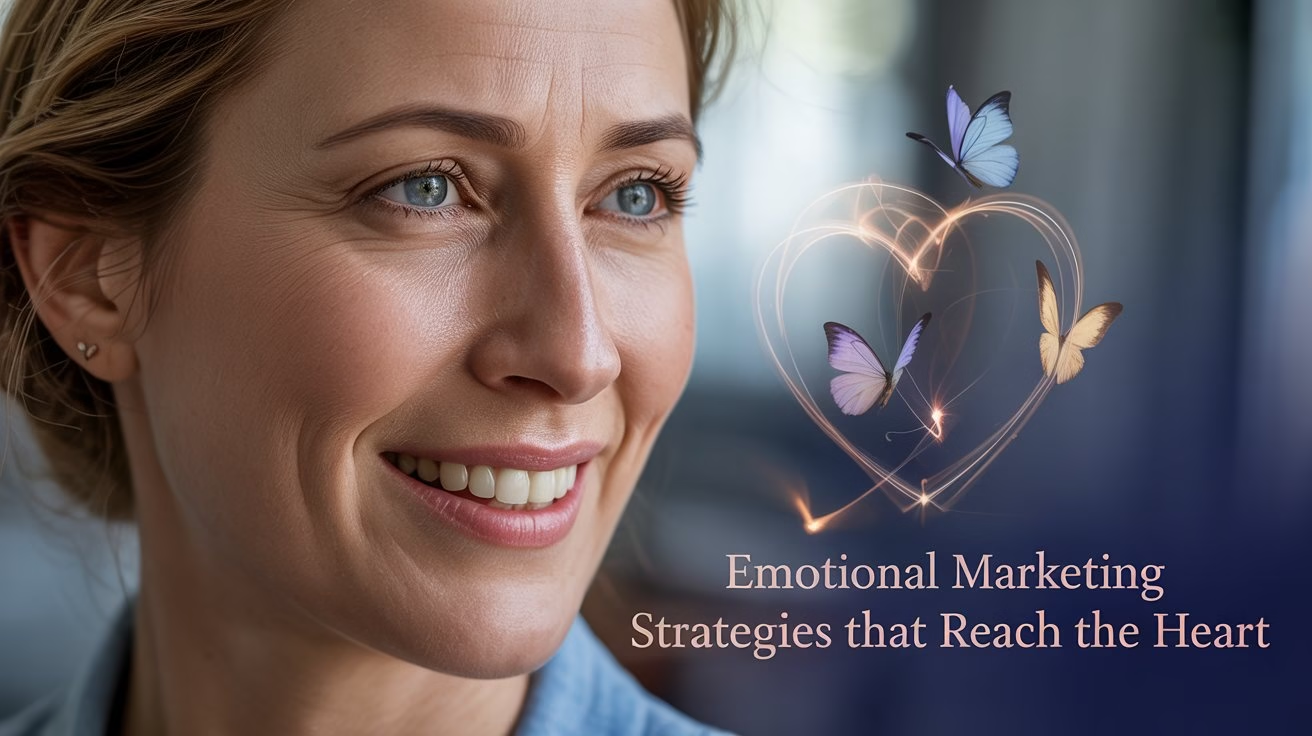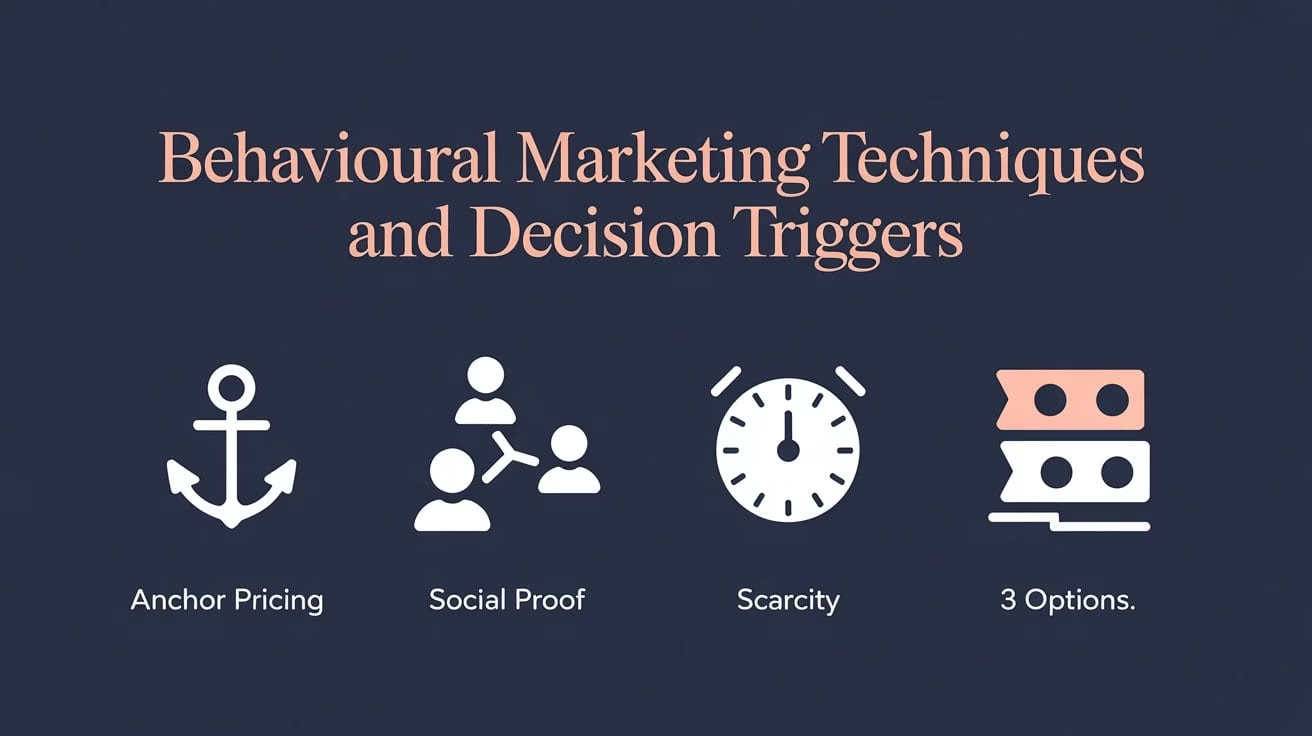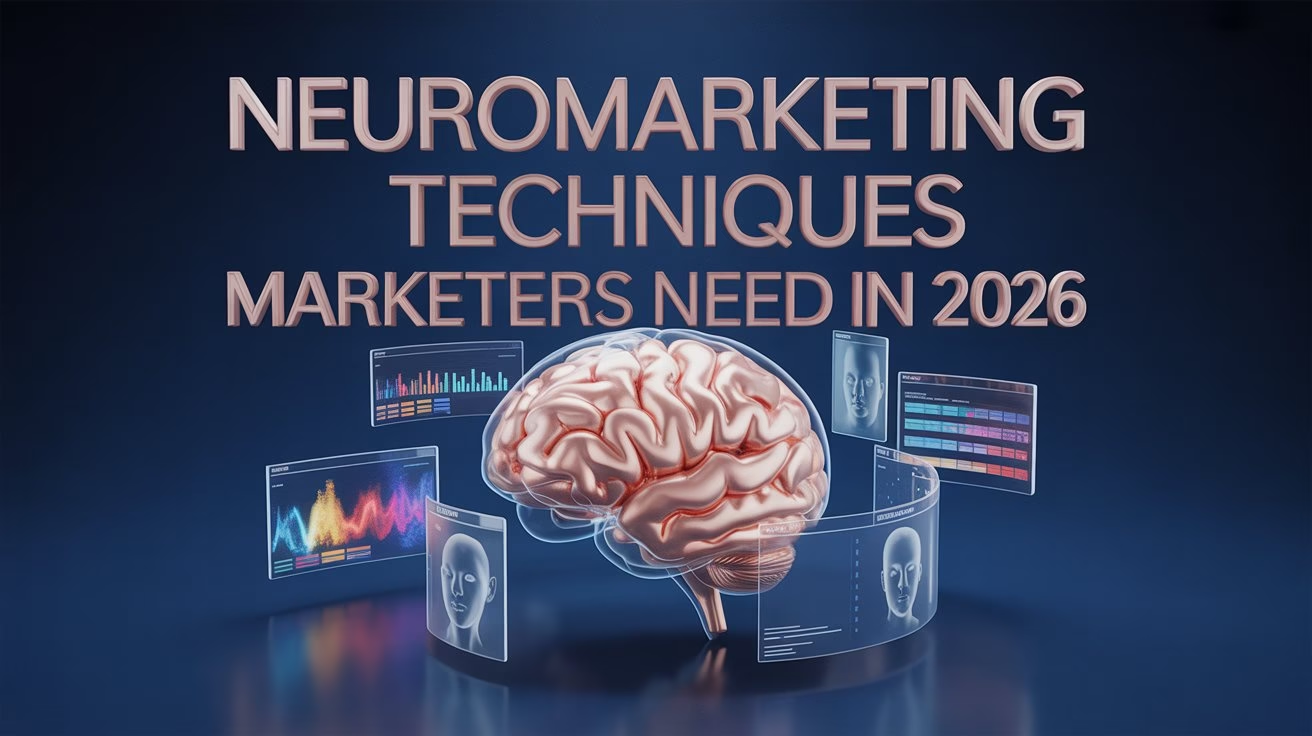Marketing keeps changing, yet one thing stays constant: the human brain still makes every decision. Campaigns built on surface-level trends now struggle, while those that respect how the mind truly works feel easier, safer, and more persuasive for people. That is where neuromarketing techniques come in.
This approach looks at how attention, emotion, memory, and bias work inside the brain, then turns those insights into practical digital strategies. The result: content feels smoother, pages feel lighter, and decisions feel natural instead of forced.
What Neuromarketing Really Means
Neuromarketing uses psychology and brain science to understand why someone stops scrolling, clicks a button, remembers a brand, or chooses one product over another. Research from Harvard Professional explains how these reactions shape real purchasing decisions.
Instead of depending only on clicks and impressions, neuromarketing studies:
- Emotional reactions to colours, fonts, and layouts in real time.
- How visual hierarchy directs the eyes across a page or screen.
- Which words reduce anxiety and which create resistance?
- How small design tweaks can change trust, curiosity, and comfort?
In simple terms, it helps marketers shape experiences that feel mentally lighter and emotionally aligned with what people already want.
Why Neuromarketing Is a 2026 Power Move

Digital spaces now feel crowded. Endless content competes for the same few seconds of attention. Algorithms reward material that holds focus, sparks emotion, and leads to meaningful action.
Neuromarketing fits this environment perfectly because it connects three powerful elements:
- Consumer psychology in marketing gives a deeper view of motivation. It is explained clearly in this consumer psychology guide from Verywell Mind.
- Data and AI tools turn those insights into testable campaigns.
- Creative storytelling shapes messages that feel human, not mechanical.
As 2026 continues, brands that apply these ideas step ahead of competitors who still rely on guesswork and generic digital marketing trends in 2026 articles. Insights from Harvard Medical School also reveal how the brain makes decisions, further supporting the rise of neuromarketing.
Even in tech-focused content published on The Digital Priyanka (TDP), such as the Smart Ring Trend 2025 blog post, user reactions often follow emotional and behavioural patterns that neuromarketing explains remarkably well.
Core Neuromarketing Techniques Driving Results
The phrase neuromarketing techniques can sound technical, yet most of these tools feel very practical in day-to-day campaigns. Marketers mainly focus on three areas: attention, emotion, and decisions.
Key methods include:
- Building layouts that follow natural reading patterns, such as the F-shape or Z-shape.
- Using contrast, size, and white space to highlight important elements.
- Writing headlines that lean on emotional marketing strategies instead of plain features.
- Designing flows that reduce cognitive load so choices feel simple, not draining.
Each small improvement supports the others. Together, they create campaigns that feel calm, clear, and persuasive without any sense of pressure.
Harvard’s collection on consumer behavior and the buying process reveals how such design choices influence real purchasing decisions.
Emotional Marketing Strategies That Reach the Heart

People rarely explain every reason behind a purchase. Feelings act first, logic arrives later. Because of this, emotional marketing strategies sit at the centre of neuromarketing work.
Emotions that influence buying include relief, pride, security, belonging, curiosity, and hope. When content taps into one of these states, the message feels personal.
Practical emotional moves:
- Use stories that mirror real-life struggles and resolutions.
- Choose imagery that shows relatable faces and genuine expressions.
- Highlight outcomes and transformations instead of dry product specs.
- Write copy that speaks to identity: “for thoughtful parents,” “for focused founders,” “for detail-driven creators”.
This style supports lasting loyalty instead of quick, shallow clicks.
Eye Tracking Marketing and Visual Hierarchy
Human eyes do not explore a page randomly. They follow patterns shaped by culture, habit, and screen design. Eye tracking marketing uses tools and heatmaps to reveal where attention lands first and how it moves.
Insights from these tests guide design choices such as:
- Placing the most important headline near the primary focal point.
- Keeping call-to-action buttons close to key benefits or proof.
- Using imagery that directs gaze toward offers or next steps.
- Avoiding cluttered sidebars and noisy backgrounds that steal focus.
These adjustments make experiences feel intuitive. Visitors move across the page with less effort, which often boosts time on site and conversion rates. This is supported by Psychology Today, which explains the power of emotions and visual attention in decision-making.
Behavioural Marketing Techniques and Decision Triggers

Neuromarketing also draws from behavioural economics, which studies how people make choices in real environments rather than perfect logical conditions. Several behavioural marketing techniques show up repeatedly in successful 2026 campaigns.
Common triggers include:
- Anchoring higher-priced plans to make mid-tier packages feel comfortable.
- Showing social proof with reviews, case studies, and “featured by” badges.
- Using scarcity cues like limited seats or closing dates for bonuses.
- Presenting three clear options instead of a long list that overwhelms the mind.
These triggers do not replace value. Instead, they remove friction and help people pick an option that already suits them. Academic and practical discussions from Harvard Medical School on how the brain makes decisions echo this idea: structure and framing can gently guide outcomes.
AI Emotion Analytics and Smarter Creative Testing
Traditional A/B tests focus on clicks alone. That surface view hides emotional reactions that never reach a button. AI emotion analytics adds depth by analysing micro-expressions, voice tone, and behaviour patterns while users watch or interact with content.
This type of analysis reveals:
- Moments when viewers feel bored or confused.
- Scenes that spark excitement or relief.
- Words that create subtle anxiety.
- Visuals that gain attention yet fail to build trust.
Such insights help refine scripts, thumbnails, ad creatives, and hero sections. Instead of guessing, marketers adjust based on how the brain actually responds. Similar thinking is evident in detailed tech reviews, such as the EMO Robot Review 2025 on The Digital Priyanka (TDP/), where human-like reactions and emotion play a major role in how people judge AI gadgets.
Neuro A/B Testing and Cognitive Ease
Neuro A/B testing combines behavioural data with neuroscientific principles. It does not stop at “Version A wins.” It asks why a version wins and how the brain experienced it.
Key patterns appear again and again:
- Shorter sentences reduce cognitive strain and increase message clarity.
- A clear contrast between the background and the text helps keep the eyes relaxed.
- Simple visual structure creates a feeling of order and safety.
- Centrally placed CTAs near benefits feel easier to act on.
Campaigns that follow these principles respect mental energy. Visitors stay longer, explore more, and convert with less hesitation.
Subconscious Triggers and Brand Memory
The subconscious mind holds repeating patterns. Colour, rhythm, shape, and story all leave marks that later guide choices. Brands that understand this design experience people remember without intense effort.
Practical subconscious triggers include:
- A consistent colour palette across the website, emails, and social media.
- Signature phrases or taglines that carry emotion and identity.
- Simple, repeated visual motifs such as circles, lines, or icons.
- Sound cues in videos that create a familiar emotional tone.
These assets turn brands into mental shortcuts. When a buying situation appears, the mind already knows which name feels right.
Neuromarketing in Digital Marketing for Everyday Use

Many creators, freelancers, and small businesses believe neuromarketing is reserved for large agencies. Reality looks different. Several methods adapt beautifully to everyday digital marketing in 2026.
Useful applications include:
- Writing hooks that open with a clear emotional promise.
- Designing landing pages that lead the eye from problem to solution step by step.
- Placing proof near risk points, such as pricing or sign-up forms.
- Structuring long-form blogs so each section begins with a strong, relevant subheading containing neuromarketing techniques or related ideas.
These changes cost little yet steadily improve engagement and conversions across channels. Even practical tech explainers, such as the Voice-Activated Lighting for Home guide on The Digital Priyanka (TDP), quietly use similar principles through clear flow and simple structure.
Neuromarketing Examples Across Channels
Neuromarketing examples appear daily across the internet, often without people realising it. Several patterns stand out:
- Short vertical videos that open with a visual shock or bold statement to capture instant attention.
- Email subject lines that trigger curiosity, safety, or gain instead of pure information.
- Landing pages that prioritise benefits in large text and move features below the fold.
- Product cards that show star ratings near prices lower risk perception.
Each example blends consumer psychology, design logic, and emotional insight. Together, they define a modern style of persuasive communication.
How Non-Marketers Benefit from Neuromarketing Insights

Neuromarketing does not serve marketers alone. Founders, coaches, educators, designers, and even job seekers benefit when messages match how the brain prefers to read and decide.
These people can:
- Design presentations with clear visual flow.
- Structure LinkedIn profiles that highlight emotional value before credentials.
- Create course pages that guide students through benefits, proof, and outcomes.
- Record videos that respect attention patterns and reduce mental fatigue.
Everyone communicates. Neuromarketing simply gives a smarter map for that communication.
Getting Started with Neuromarketing Techniques Today
The most effective path does not require expensive labs or complex hardware. Small, thoughtful changes create a big long-term impact.
A simple starting checklist:
- Use headlines that speak to emotions instead of vague buzzwords.
- Keep paragraphs short and readable on mobile.
- Place primary calls to action in areas with high visual focus.
- Add social proof near key decision points to calm doubts.
- Test layouts with tools that simulate eye tracking, if available.
- Review content to ensure emotional marketing strategies appear in each major section.
Over time, these steps build a brand presence that feels psychologically aligned with how people already think and feel.
Final Thoughts: Why Neuromarketing Belongs in Every 2026 Strategy
Brands that respect the human brain win attention, trust, and loyalty faster. They design experiences that feel clear instead of noisy, safe instead of risky, and meaningful instead of random. That is the quiet power of neuromarketing techniques.
This approach supports marketers, creators, and everyday professionals who want communication that truly lands. As 2026 moves forward, neuromarketing will no longer appear as a rare experiment. It will sit at the core of effective digital marketing, guiding campaigns that feel human, intelligent, and naturally persuasive.
FAQS
What are neuromarketing techniques?
Neuromarketing techniques study how the brain reacts to visuals, colours, messages, and emotions. These methods help marketers understand what triggers clicks and buying decisions. They combine consumer psychology, emotional cues, and behavioural patterns to create marketing that feels natural and easy for the brain to process.
How does neuromarketing help digital marketers?
Neuromarketing guides marketers in understanding why people prefer certain designs or offers. Using emotional insights, eye movement patterns, and subconscious triggers, brands create intuitive campaigns that improve engagement and conversions.
Is neuromarketing the same as psychology in marketing?
They connect but work differently. Psychology explains why people choose something, while neuromarketing techniques reveal how the brain reacts during the decision. Together, they help marketers create emotionally aligned and visually comfortable content.
What are simple neuromarketing examples?
Examples include warm colours for comfort, high-attention CTAs, trust-building testimonials, and clean layouts that reduce mental effort. These methods boost engagement and conversions.
Are emotional marketing strategies part of neuromarketing?
Yes. Emotional marketing drives decisions, and strategies like storytelling, relatable visuals, and identity-based messaging help brands form deeper connections.
What tools do marketers use for neuromarketing?
Marketers use heatmaps, eye-tracking tools, AI emotion analytics, and neuro A/B testing platforms to study reactions and improve campaigns.
How does eye tracking marketing improve conversions?
Eye tracking marketing shows where people look first and what distracts them. This helps place headlines, images, and CTAs in stronger positions, leading to smoother navigation and higher conversions.
Can small businesses use neuromarketing techniques?
Absolutely. Simple steps like emotional headlines, trust signals, and clean layouts help small businesses create strong customer connections.
How does neuromarketing fit into digital marketing trends 2026?
Neuromarketing aligns with digital marketing trends 2026 because algorithms now favour emotional relevance, clarity, and user comfort.
Is neuromarketing ethical?
Yes, when used responsibly. It focuses on clarity, trust, and reducing decision stress. Ethical approaches rely on behavioural marketing techniques to help users choose confidently.




